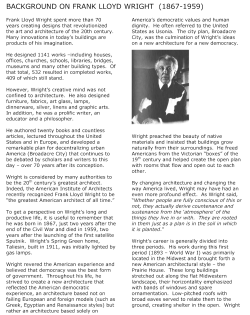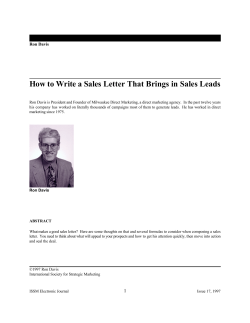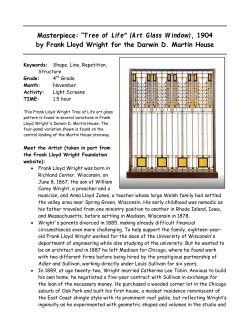
Identification and Treatment of Benign Skin Lesions Objectives
Identification and Treatment of Benign Skin Lesions Wend L. Wendy L Wright, W ight MS, MS RN, RN ARNP ARNP, FNP FNP, FAANP Family Nurse Practitioner Wright & Associates Family Healthcare Amherst, New Hampshire Partner – Partners in Healthcare Education, LLC Objectives Upon completion of this lecture, the health care provider will be able to: 1. Identify common benign dermatologic lesions in the primary care setting 2 Discuss treatment of various lesions 2. 3. Discuss implementation of cryosurgery into your practice ©Wright, 2010 Wendy Wright, ARNP, FNP, FAANP Financial Disclosures • Consultant: Orasure Technologies Common Dermatologic Lesions ©Wright, 2010 Skin Tags (Achrochordons) • Very commonly encountered benign lesions • Seen in approximately 25% of men and women • Most common locations: axilla, neck, inguinal region • Usually begin in 2nd decade and peak by the 5th decade of life ©Wright, 2010 Wright, 2010 ©Wright, 2010 Skin Tags (Achrochordons) • Appearance – Begins as a tiny flesh-toned or brown lesion – May increase to 1 cm in size – Hallmark: polypoid mass on a long narrow stalk – Bleeds very easily; particularly because they often get caught on a necklace or clothing ©Wright, 2010 1 Diagnosis? Linked with____________? Skin Tags ©Wright, 2010 Skin Tags (Achrochordons) ©Wright, 2010 Dermatofibroma • Common, benign asymptomatic lesions • May be slightly itchy; Retract beneath the skin when you try to elevate them • 1-10 1 10 lesions occurring on the extremities; most common location is the anterior surface of the lower leg • Etiology: fibrous reaction to trauma, virus or an insect bite • Treatment – Shave excision – Cryosurgery – Electrocautery ©Wright, 2010 Dermatofibroma – Multiple lesions: Systemic lupus ©Wright, 2010 Dermatofibroma • Treatment – Elliptical excision – Shave excision – Cryosurgery ©Wright, 2010 Wright, 2010 ©Wright, 2010 2 Verruca Vulgaris Verruca Vulgaris • Common warts • Benign lesions of the epidermis caused by a virus • Transmitted by touch and commonly appear at sites of trauma, on the hands, around the periungual regions from nail biting and on the plantar surfaces of the feet • Appearance – Smooth, flesh colored papules which evolve into a dome-shaped growth with black dots on the surface – Black dots are thrombosed capillaries and can be visualized with a 15 blade • Treatment – OTC products: Compound W; Duoplant ©Wright, 2010 Verruca Vulgaris ©Wright, 2010 Verruca Vulgaris • Treatment – – – – – – – Liquid nitrogen Cryosurgery Electrocautery Duct Tape Blunt dissection (plantar lesions) Tagamet 600 mg bid x 2 - 4 weeks Imiquimod ©Wright, 2010 Condyloma Acuminata • AKA: genital warts • Etiology: human papillomavirus – More than 30 strains of HPV infect the genital tract – Usually caused by HPV subtypes 6, 11, 40 – 45, and 51 ©Wright, 2010 Condyloma Acuminata • Characteristics – Cauliflower appearing lesion – White or flesh toned – May be associated with abnormal pap smear • Transmitted through sexual contact • Incubation period of 1 – 6 months ©Wright, 2010 Wright, 2010 ©Wright, 2010 3 Condylomata Acuminata Condyloma Acuminata • Treatment – Cryosurgery – Imiquimod 5% cream – TCA – Electrodessication – Laser – Podofilox ©Wright, 2010 Seborrheic Keratoses • • • • ©Wright, 2010 Seborrheic Keratoses Most common benign skin lesion Unknown origin No p potential for malignancy g y Characteristics – Smooth surface with tiny round, embedded pearls – May be rough, dry and cracked – Appear stuck on the surface ©Wright, 2010 Seborrheic Keratosis ©Wright, 2010 Wright, 2010 ©Wright, 2010 Can Mimic a Malignant Melanoma ©Wright, 2010 4 Seborrheic Keratoses • Treatment – Lesions are only removed for cosmetic purposes or for a biopsy if pathology is unknown – If removed, shave excision – Cryosurgery Molluscum Contagiosum • Infection caused by the pox-virus • Most commonly seen on the face, trunk and axillae • Self-limiting • Spread by auto-inoculation • Incubation period: 2-7 weeks after exposure • Contagious until gone ©Wright, 2010 Molluscum Contagiosum ©Wright, 2010 Molluscum Contagiosum • Asymptomatic lumps • May have 1 - hundreds • Physical Examination – – – – 2-5mm p papule p with an umbilicated center Flesh toned - white in color Most often around the eye in children Scaling and erythema around the periphery of the lesion is not unusual – If in the genital area of a child-should consider sexual abuse ©Wright, 2010 Molluscum Contagiosum • Plan Molluscum Contagiosum • Plan – Diagnostic: • None or KOH prep looking for inclusion bodies – Therapeutic: • Conservative treatment is the best for children –Curettage –Cryosurgery –Tretinoin ©Wright, 2010 Wright, 2010 ©Wright, 2010 – Therapeutic: • Salicylic Acid (Occlusal) • Laser • TCA • Imiquimod ©Wright, 2010 5 Molluscum Contagiosum • Plan – Educational • May resolve on own in 6 - 9 months • Contagious until lesions are gone • Benign • Recurrence very common ©Wright, 2010 Actinic Keratoses Actinic Keratoses • Common sun-induced premalignant lesions • Incidence: Increases with age, light complexion • Clinical presentation: Slightly roughened area that often bleeds when excoriated – Progresses to an adherent yellow crust – Size 3-6 mm – Common location: scalp, temples, forehead, hands ©Wright, 2010 Actinic Keratosis • Prognosis – Can spontaneously regress if sun exposure is eliminated – Good G d prognosis i if treated t t d adequately d t l – Small percentage transform into a squamous cell carcinoma which can metastasize • 60% of all squamous cell carcinomas began as an actinic keratosis ©Wright, 2010 Actinic Keratosis • Keratin may accumulate and transform lesion into a cutaneous horn • Frequently seen on the pinna of the ear ©Wright, 2010 Wright, 2010 ©Wright, 2010 Actinic Keratoses • Treatment – Cryosurgery • preferred method – – – – – – Surgical g Removal Tretinoin 5-fluorouracil Acid peels Sunscreen Imiquimod ©Wright, 2010 6 Cryosurgery Cryosurgery • Definition: The process of applying extreme cold to a lesion for the purpose of destruction • Indications – Seborrheic keratoses – Actinic keratoses – Skin tags – Verruca vulgaris • Indications – Plantar warts – Condyloma acuminatum – Molluscum contagiosum • Advantages – Minimal discomfort – Minimal scarring – No sutures needed ©Wright, 2010 Cryosurgery ©Wright, 2010 Cryosurgery • Disadvantages – May not be effective for all lesions, particularly warts – Some individuals report moderate pain during the procedure • Equipment – Cotton applicators – Vaseline petroleum jelly – Dressing • Equipment – Betadine – 4X4 gauze – Freeze kit or nitrous oxide cryosurgery unit ©Wright, 2010 Cryosurgery ©Wright, 2010 Cryosurgery • Procedure – Position the patient for provider comfort – Cleanse the lesion with betadine – Cover the lesion with a water soaked dressing for 5-10 minutes – Using the cotton applicators, surround the lesion with vaseline petroleum jelly – Choose the appropriate wand for the lesion – Freeze the lesion for the appropriate amount of time ©Wright, 2010 Wright, 2010 ©Wright, 2010 7 Cryosurgery Cryosurgery ©Wright, 2010 Cryosurgery ©Wright, 2010 Cryosurgery • Time Frame – Utilize charts provided with your particular cryokit/device – I.e. 20 – 40 seconds – Liquid nitrogen – much, much less than this • Time Frame – Another method is to apply the freeze until a frost ring appears approximately 1-2 mm around the lesion ©Wright, 2010 Cryosurgery Cryosurgery • Procedure • Red Flags – Apply additional pressure for deeper tissue penetration – Cover C with ith a dressing d i • Follow-up – Monitor for redness, discharge, fever, pain, streaking – Recheck lesion in 4 - 6 weeks ©Wright, 2010 Wright, 2010 ©Wright, 2010 – Malignant lesions – Facial lesions – Infected lesion • CPT Code – 17000: Destruction, any method, all benign – 17110: Destruction, flat warts or molluscum contagiosum ©Wright, 2010 8 Thank You Case Study • 47 year-old female presents with the following: – 2 verruca vulgaris lesions on the soles of her feet – 1 actinic keratosis on her right hand – Assessments: • 1. Warts – CPT: 17110: 1-14 lesions (cryo) • 2. Actinic keratosis – CPT: 17000 (1 lesion) – destroy benign/premalig lesion – Mod 57 (see and perform destruction today) – ©Wright, 2010 I Would Be Happy To E t t i A Entertain Any Questions That You May Have!! ©Wright, 2010 Wendy L. Wright, MS, RN, ARNP, FNP, FAANP (W) 603-249-8883 (H) 603-472-6776 (F) 603-472-2597 Email: WendyARNP@aol.com ©Wright, 2010 Wright, 2010 9
© Copyright 2025













